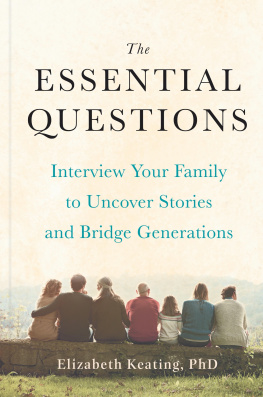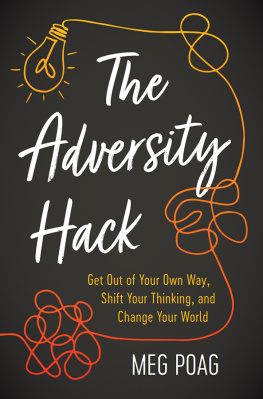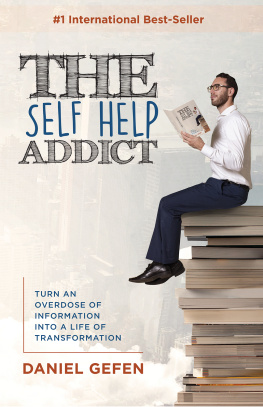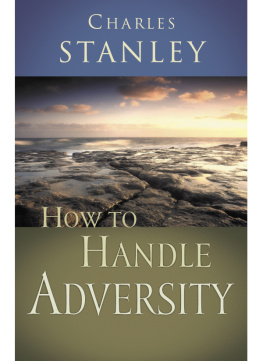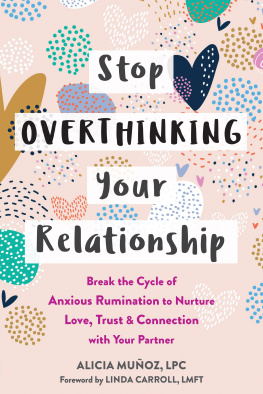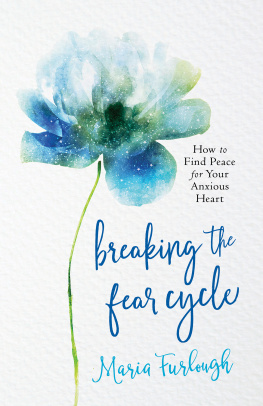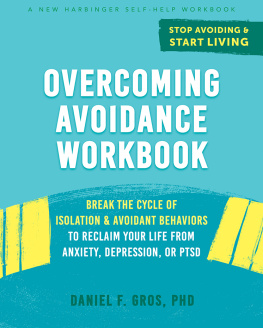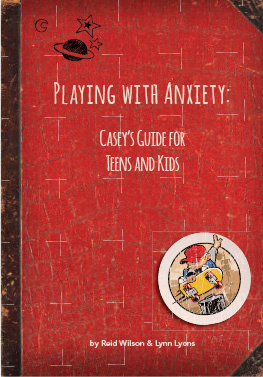Daniel P. Keating - Born Anxious: The Lifelong Impact of Early Life Adversity - and How to Break the Cycle
Here you can read online Daniel P. Keating - Born Anxious: The Lifelong Impact of Early Life Adversity - and How to Break the Cycle full text of the book (entire story) in english for free. Download pdf and epub, get meaning, cover and reviews about this ebook. year: 2017, publisher: St. Martins Press, genre: Home and family. Description of the work, (preface) as well as reviews are available. Best literature library LitArk.com created for fans of good reading and offers a wide selection of genres:
Romance novel
Science fiction
Adventure
Detective
Science
History
Home and family
Prose
Art
Politics
Computer
Non-fiction
Religion
Business
Children
Humor
Choose a favorite category and find really read worthwhile books. Enjoy immersion in the world of imagination, feel the emotions of the characters or learn something new for yourself, make an fascinating discovery.

- Book:Born Anxious: The Lifelong Impact of Early Life Adversity - and How to Break the Cycle
- Author:
- Publisher:St. Martins Press
- Genre:
- Year:2017
- Rating:3 / 5
- Favourites:Add to favourites
- Your mark:
- 60
- 1
- 2
- 3
- 4
- 5
Born Anxious: The Lifelong Impact of Early Life Adversity - and How to Break the Cycle: summary, description and annotation
We offer to read an annotation, description, summary or preface (depends on what the author of the book "Born Anxious: The Lifelong Impact of Early Life Adversity - and How to Break the Cycle" wrote himself). If you haven't found the necessary information about the book — write in the comments, we will try to find it.
Daniel P. Keating: author's other books
Who wrote Born Anxious: The Lifelong Impact of Early Life Adversity - and How to Break the Cycle? Find out the surname, the name of the author of the book and a list of all author's works by series.
Born Anxious: The Lifelong Impact of Early Life Adversity - and How to Break the Cycle — read online for free the complete book (whole text) full work
Below is the text of the book, divided by pages. System saving the place of the last page read, allows you to conveniently read the book "Born Anxious: The Lifelong Impact of Early Life Adversity - and How to Break the Cycle" online for free, without having to search again every time where you left off. Put a bookmark, and you can go to the page where you finished reading at any time.
Font size:
Interval:
Bookmark:

The author and publisher have provided this e-book to you for your personal use only. You may not make this e-book publicly available in any way. Copyright infringement is against the law. If you believe the copy of this e-book you are reading infringes on the authors copyright, please notify the publisher at:
us.macmillanusa.com/piracy .
To my clan, whose love and support is the foundation for this book
The names and identifying characteristics of some persons described in this book have been changed.
A NEW LIFE BEGINS. A T the start, complex changes are taking place, as a single cell grows in just a few months time into a thriving fetus. When all goes well, with the fetus developing in the protected space of the mothers womb, a healthy baby soon emerges. Parenting then takes over to help the baby develop into a healthy child.
Alas, sadly, sometimes all does not go well. Toxic substances may get past the protections surrounding the womb and either terminate the pregnancy or make this new life especially challenging. Or, harmful genetic variations can have the same result. And sometimes, hidden from view and not understood until quite recently, a biological change of a different sort may be made while the fetus is still in the womb. Whether that change is made will be determined by the stress level of the mother .
Of course, expectant moms do have things to be stressed about. They want their children to grow strong and healthy, and pregnancy can often be a difficult time physically and emotionally. So let me be clear that we are not talking about everyday stress. But if an expectant mother experiences unusual levels of stress, this hidden biological change can happen. This can be triggered by extreme situations like an abusive relationship, exposure to violence, or job loss. But this same change can also be triggered by more common concerns like divorce, conflicts at work, or even excessive concerns about being able to help her baby find a place in an increasingly competitive world. If an expectant mother is experiencing high levels of stressfor whatever reasons over a period of timeher elevated stress levels may, through a mechanism we are just coming to understand, result in her child being born anxious.
We also know that this biological switch can flip even after the child is born, if the primary caregiver is under enough high-level stress to get in the way of providing that child with the necessary nurturing. Once again, this baby will show signs of having been born particularly anxious.
As babies, children like this cant be easily soothed. As young children, they struggle to get along in school or with friends because they react badly to even minor bumps in the road. As teenagers, they may long for peer connections but retreat from social life because it seems so overwhelming, as they are driven to scan everyday environments looking for potential threats. As adults, their behavior is off-putting to coworkers, family, and friends because it is so unpredictable, and they themselves find it difficult as they have little trust that their well-being will matter to others. Though early life stress is not the only possible cause of these behaviors, it is a major one, the impact of which has been overlooked until recently. And it can affect anyone, at any level of social class.
Anxious people live their entire lives with a heightened sensitivity to their environment, worried about missing signals that might warn of danger or threat. This heightened sensitivity, leading to feeling perpetually anxious, agitated, stressed-out, and overwhelmed, is hard to endure day after day. More recently, weve also learned how heavy a toll this anxiety can take on their physical health. As early as the midtwenties, they can feel shrouded in a general malaise; in midlife, they are prone to heart disease; and eventually they may live shortened lives.
But here is something we havent focused on enough. This anxious, high stress burden is carried not only by those who are directly affected but also by those who are close to them. Figuring out how to deal with someone whose hair-trigger response is hard to predict, and how to help them to regulate their emotions and behavior, can prove ineffectiveand exhausting. Furthermore, as weve recently learned, stress is contagious, so those who might otherwise be able to provide support are likely to be feeling quite stressed themselves.
The stress epidemic in modern society is showing up as increases in stress-related illnesses, and in peoples increasing reports of feeling anxious, agitated, and overwhelmed. Advertisements bombard us with promotions of supplements that claim to reduce stress, though evidence of their effectiveness and safety is weak or nonexistent. There are surely a myriad of reasons for this stress epidemic, but research has now shown us the links between early life stress and a lifetime of being stressed-out, the health and developmental effects of that kind of life, and the stress epidemic in society that can, in turn, increase the odds of early life adversity in the next generation.
To figure out how to actually break this cycle, we need to understand how it really works. Well need to look at this from several perspectives, using a number of tools from different scientific disciplines. What is the nature of the hidden biology that launches a lifetime of challenges for health and development? How can we recognize the pattern of constantly being stressed-out, in ourselves and others, and what can we do about it? How can we buffer our children against this?
And perhaps most important, why is this happening now in our society, and can we do anything about that? In the United States, and many other modern, wealthy countries, the core answer, as we will see, is rising inequality, affecting the poorest to the richest and everyone in between. This thoroughly modern stressor is less visible than the threats to survival of our shared past from predators, violence, or deprivation, but is often just as lethal. What we will also see is that there are ways to break the cycle in our own homes, workplaces, and communitiesbut first we need to understand how it truly works.
T HE SUMMER AFTER I TURNED fifteen, I helped out at a literacy program in one of the most economically distressed neighborhoods in my home town, Baltimore. There I met and tutored a boy named Jason. I came to know Jason pretty well. Indeed, I have never forgotten him, for he awakened in me the feeling of dj vu.
Jason wanted to learn. He tried his best to grasp what I was trying to teach, although without much success. It seemed as if the process of learning, more than the material itself, eluded him. I had no idea how to break through to help him.
But Jason stood out in my mind for another reason. He was prone to outbursts. They came on suddenly, like a summer storm. When they occurred, hed angrily lash out at another child or even at one of the counselors. Other days, instead of lashing out, hed withdraw so completely that hed refuse to acknowledge anyone.
That summer, I heard over and over again from the adults around us about what it meant to grow up like Jason, in a tough neighborhood, deprived of opportunity. Im sure they told us that to make sure that kids like me were never uncharitable toward kids like him. But I stayed quiet whenever this explanation was offered. And I knew why. Because of a boy named David.
David had been my classmate at the parochial elementary school we both attended. One day, when I was a fourth-grader, I was asked to take charge of our boisterous class a few afternoons a week. (I know this sounds strange, but back then our parochial school, like many others at the time, was overcrowded and understaffed.) Before I took over the class, I would have described David as a kid like me. He came from the same kind of suburban, middle-class, education-oriented family. He seemed to be a pretty good student. It was only when I took charge that I began to notice the ways in which David stood out. Most obviously, he switched without warning from friendly and easygoing to angry and out of control. His outbursts were often triggered by something as innocuous as a small change in what we were working on in the class. And once unraveled, he took a long time to calm down.
Next pageFont size:
Interval:
Bookmark:
Similar books «Born Anxious: The Lifelong Impact of Early Life Adversity - and How to Break the Cycle»
Look at similar books to Born Anxious: The Lifelong Impact of Early Life Adversity - and How to Break the Cycle. We have selected literature similar in name and meaning in the hope of providing readers with more options to find new, interesting, not yet read works.
Discussion, reviews of the book Born Anxious: The Lifelong Impact of Early Life Adversity - and How to Break the Cycle and just readers' own opinions. Leave your comments, write what you think about the work, its meaning or the main characters. Specify what exactly you liked and what you didn't like, and why you think so.

